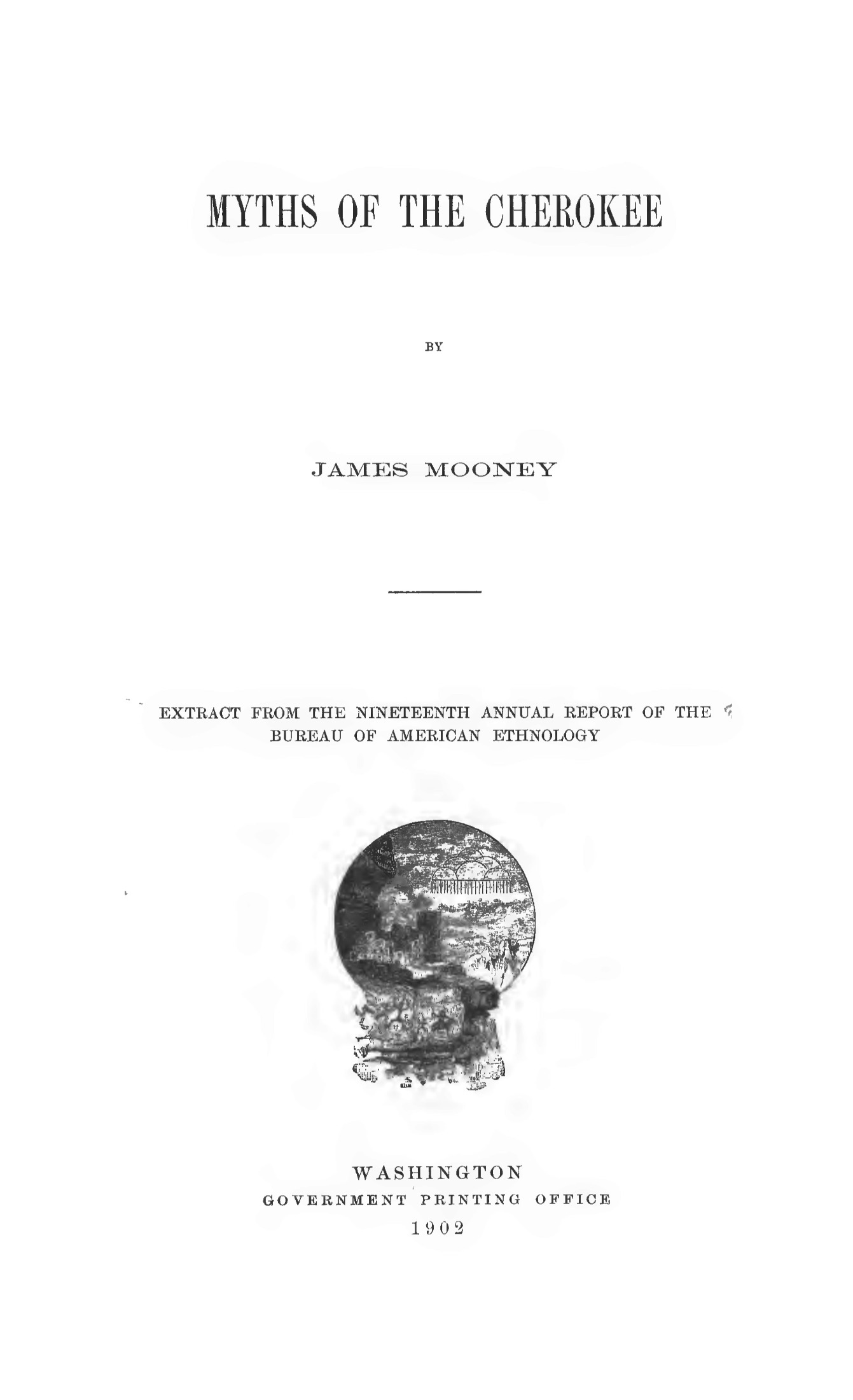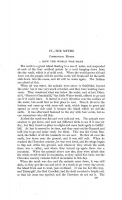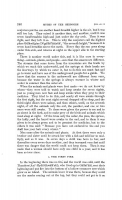Text summary
From: Book · James Mooney · 1902

Text: Full Transcript
English a
| Transcript | |
|---|---|
| p. 239 | |
| Cosmogonic Myths: 1. How the World was Made | |
| The earth is a great island floating in a sea of water, and suspended at each of the four cardinal points by a cord hanging down from the sky vault, which is of solid rock. When the world grows old and worn out, the people will die and the cords will break and let the earth sink down into the ocean, and all will be water again. The Indians are afraid of this. | |
| When all was water, the animals were above in Gălûñ′lătĭ, beyond the arch; but it was very much crowded, and they were wanting more room. They wondered what was below the water, and at last Dâyuni′sĭ, “Beaver’s Grandchild,” the little Water-beetle, offered to go and see if it could learn. It darted in every direction over the surface of the water, but could find no firm place to rest. Then it dived to the bottom and came up with some soft mud, which began to grow and spread on every side until it became the island which we call the earth. It was afterward fastened to the sky with four cords, but no one remembers who did this. | |
| At first the earth was flat and very soft and wet. The animals were anxious to get down, and sent out different birds to see if it was yet dry, but they found no place to alight and came back again to Gălûñ′lătĭ. At last it seemed to be time, and they sent out the Buzzard and told him to go and make ready for them. This was the Great Buzzard, the father of all the buzzards we see now. He flew all over the earth, low down near the ground, and it was still soft. When he reached the Cherokee country, he was very tired, and his wings began to flap and strike the ground, and wherever they struck the earth there was a valley, and where they turned up again there was a mountain. When the animals above saw this, they were afraid that the whole world would be mountains, so they called him back, but the Cherokee country remains full of mountains to this day. | |
| When the earth was dry and the animals came down, it was still dark, so they got the sun and set it in a track to go every day across the island from east to west, just overhead. It was too hot this way, and Tsiska′gĭlĭ′, the Red Crawfish, had his shell scorched a bright red, so that his meat was spoiled; and the Cherokee do not eat it. The | |
| p. 240 | |
| conjurers put the sun another hand-breadth higher in the air, but it was still too hot. They raised it another time, and another, until it was seven handbreadths high and just under the sky arch. Then it was right, and they left it so. This is why the conjurers call the highest place Gûlkwâ′gine Di′gălûñ′lătiyûñ′, “the seventh height,” because it is seven hand-breadths above the earth. Every day the sun goes along under this arch, and returns at night on the upper side to the starting place. | |
| There is another world under this, and it is like ours in everything—animals, plants, and people—save that the seasons are different. The streams that come down from the mountains are the trails by which we reach this underworld, and the springs at their heads are the doorways by which we enter it, but to do this one must fast and go to water and have one of the underground people for a guide. We know that the seasons in the underworld are different from ours, because the water in the springs is always warmer in winter and cooler in summer than the outer air. | |
| When the animals and plants were first made—we do not know by whom—they were told to watch and keep awake for seven nights, just as young men now fast and keep awake when they pray to their medicine. They tried to do this, and nearly all were awake through the first night, but the next night several dropped off to sleep, and the third night others were asleep, and then others, until, on the seventh night, of all the animals only the owl, the panther, and one or two more were still awake. To these were given the power to see and to go about in the dark, and to make prey of the birds and animals which must sleep at night. Of the trees only the cedar, the pine, the spruce, the holly, and the laurel were awake to the end, and to them it was given to be always green and to be greatest for medicine, but to the others it was said: “Because you have not endured to the end you shall lose your hair every winter.” | |
| Men came after the animals and plants. At first there were only a brother and sister until he struck her with a fish and told her to multiply, and so it was. In seven days a child was born to her, and thereafter every seven days another, and they increased very fast until there was danger that the world could not keep them. Then it was made that a woman should have only one child in a year, and it has been so ever since. | |
| Source(s) a Mooney, MOTC, 239-240 launch . | |
Original source data
Background
"How the World was Made" is a segment from a 1902 book by James Mooney. The book concerns Cherokee culture and their spiritual beliefs. Within chapter IV, "The Myths," a creation narrative is provided. James Mooney was an American ethnographer that published his book as an extract of his report for the United States government.
Cite this page
OMNIKA Foundation Contributors. ""How the World was Made": Cherokee Creation Myth by James Mooney." OMNIKA – World Mythology Index, OMNIKA Foundation, 10 Apr. 2019, omnika.org/stable/56. Accessed 29 Apr. 2024.
OMNIKA (2019, April 10). "How the World was Made": Cherokee Creation Myth by James Mooney. Retrieved from https://omnika.org/stable/56
OMNIKA Foundation Contributors. ""How the World was Made": Cherokee Creation Myth by James Mooney." Las Vegas, NV: OMNIKA Foundation. Created April 10, 2019. Accessed April 29, 2024. https://omnika.org/stable/56.








